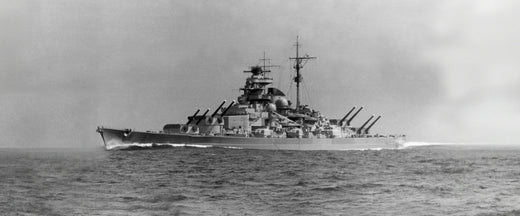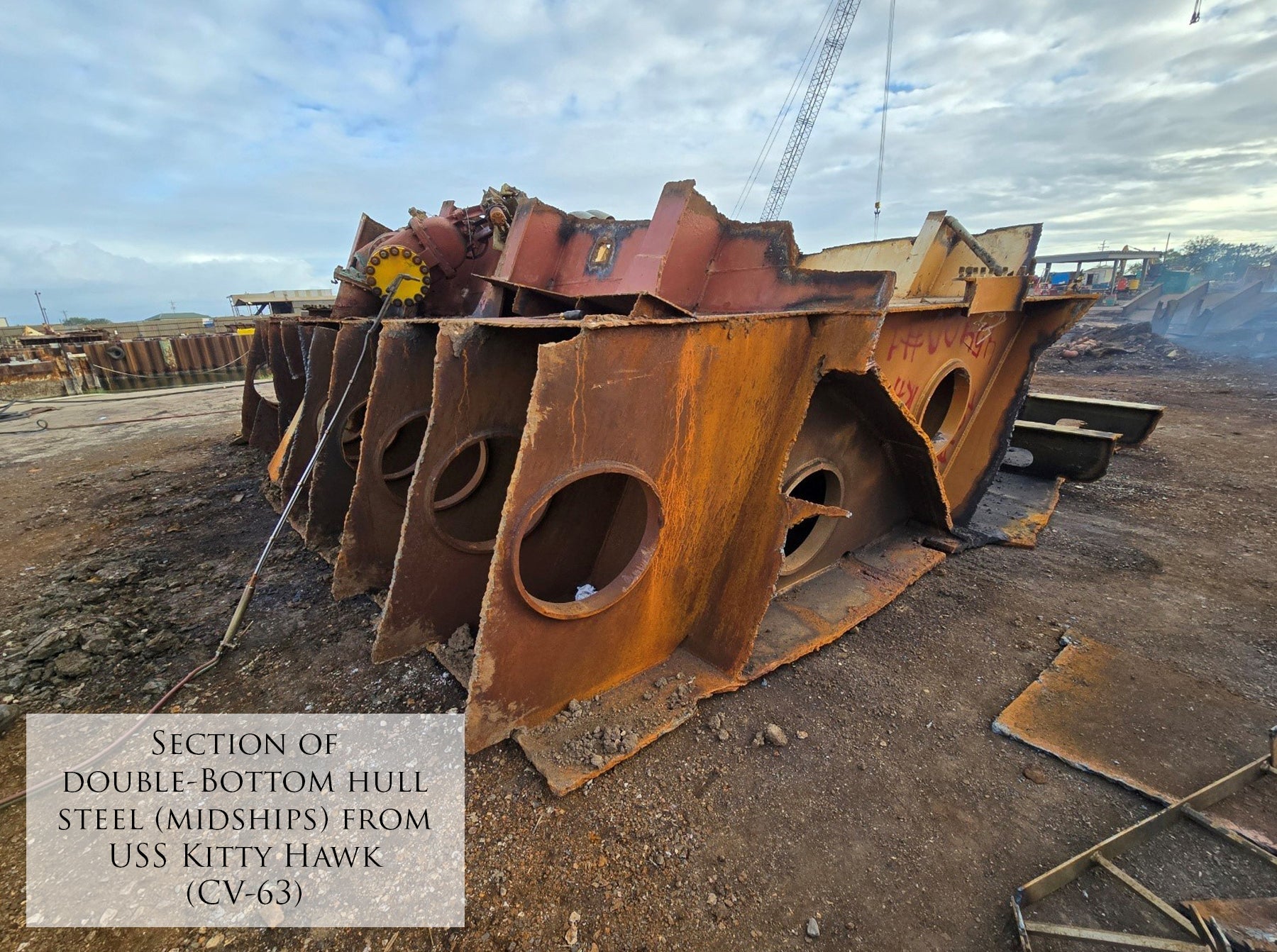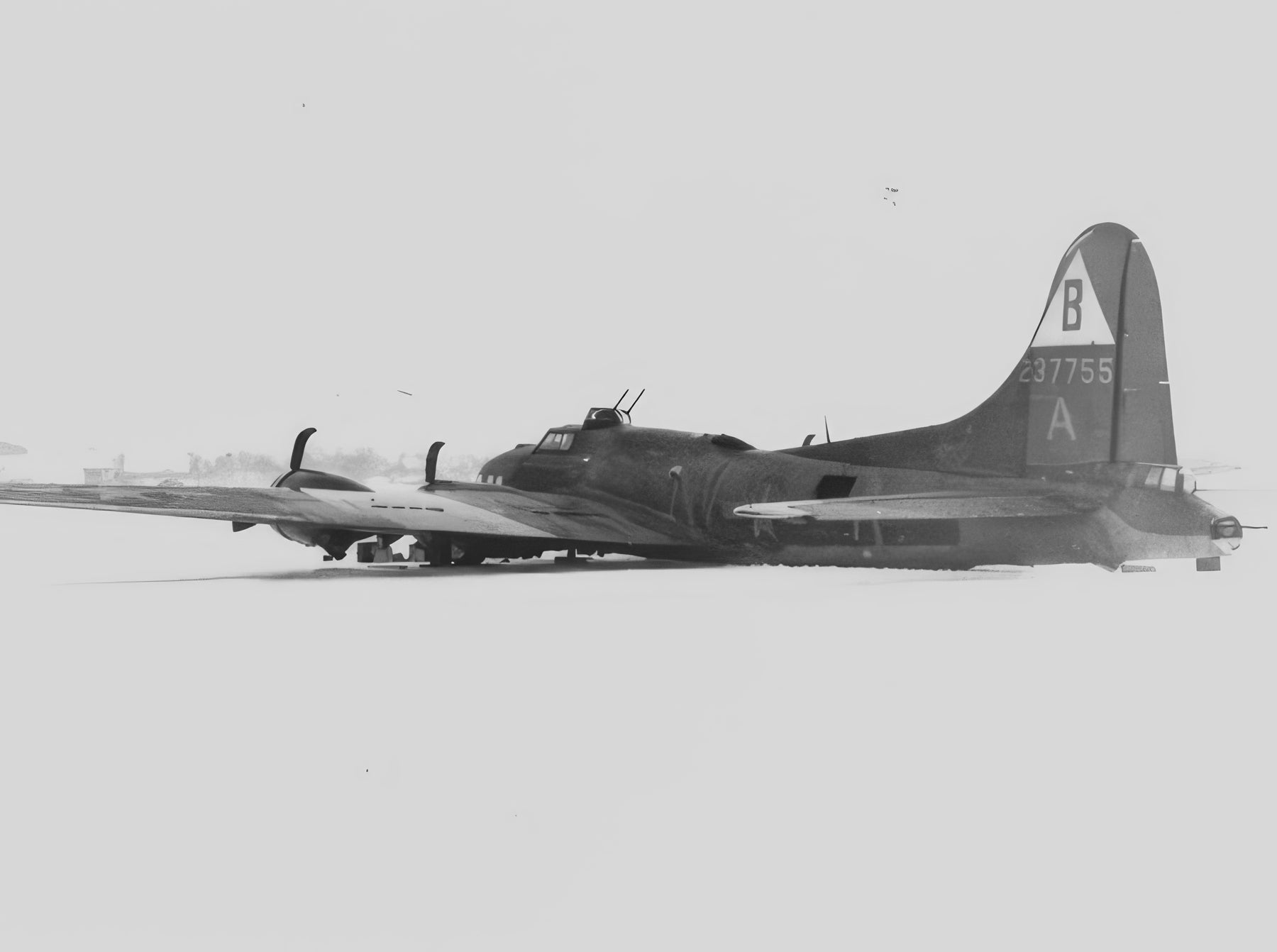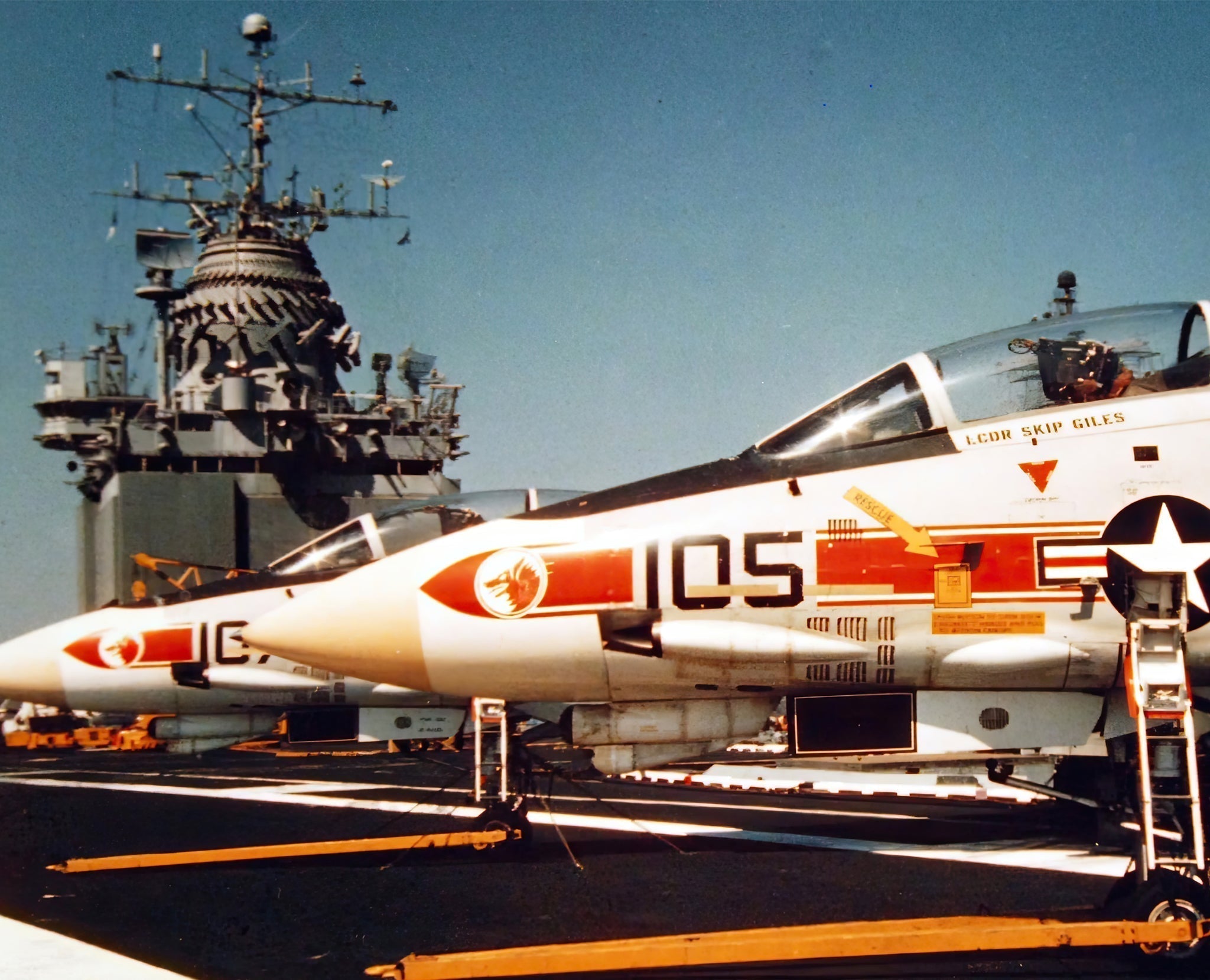This Limited Edition Fine Art Print autographed by Artist Craig Tinder depicts the "Lonely Queen of the North" - the German Battleship Tirpitz on her raid on the Svalbard Archipelago on 8 September 1943.
Details About the RELIC:
The relic fragment included with this canvas originates from an aluminum duct piece recovered from the German Battleship Tirpitz. This item along with many others, were recovered in June 1974 by the British Sub-Aqua Club, an organization known for conducting historical and archaeological dives. The expedition's primary goal was to locate remnants of the X-5 midget submarine, one of six X-Craft used in the daring 1943 attack on the Tirpitz. Although the X-5 was not discovered during this mission, divers uncovered parts of the X-7 submarine, another participant in the attack, along with various relics from the Tirpitz itself.
 Tirpitz relic - aluminum duct fragment included with "Operation Zitronella" canvas
Tirpitz relic - aluminum duct fragment included with "Operation Zitronella" canvas
Among the rare artifacts recovered from the site were crockery, bottles, galley items, and various pieces of aluminum ducting. The fragment included with this art print originates from a piece of ductwork believed to be near the galley or an area within close proximity. These remnants provide a tangible connection to the history of the Tirpitz, a battleship that was ultimately sunk on 12 November 1944 by RAF Lancaster bombers using 12,000-pound "Tallboy" bombs. The massive destruction caused the ship to capsize in a Norwegian fjord, where it remained until its gradual dismantling between 1948 and 1957.
 Relics from 1974 Tirpitz recovery expedition, including: (L to R) food tin, can opener, and the aluminum duct work used in the limited edition art piece
Relics from 1974 Tirpitz recovery expedition, including: (L to R) food tin, can opener, and the aluminum duct work used in the limited edition art piece
The Story Behind the Print:
8 September 1943 - The German battleships Tirpitz and Scharnhorst launched a raid on the Allied-occupied Svalbard Archipelago in the Arctic. This operation, codenamed Zitronella, aimed to disrupt the Allies’ infrastructure and resources in the region while showcasing the remaining power of Germany’s surface fleet. The raid was one of the few occasions where the Tirpitz—the heaviest battleship ever built by a European navy—was used in an offensive role during World War II. Often referred to as the "Lonely Queen of the North," the Tirpitz spent much of the war as a strategic threat, being primarily stationed in Norwegian fjords to counter any potential Allied naval movements.
 German Battleship Tirpitz
German Battleship Tirpitz
The attack on Svalbard inflicted significant damage on the infrastructure, including the destruction of radio stations, weather outposts, and coal mines. The raid, however, was strategically minor and served more as a symbolic gesture of Germany’s ability to project naval power into the Arctic rather than a decisive military success. Despite the destruction caused, the Tirpitz and Scharnhorst returned to their Norwegian bases without engaging in major combat.
The Tirpitz’s presence in Norway had a notable psychological impact on Allied naval planning, tying up resources and attention throughout the war. However, this raid on Svalbard would be the only offensive operation the Tirpitz ever carried out, as it remained largely inactive for the remainder of the war. Eventually, the Tirpitz was sunk by RAF Lancaster bombers in November 1944, ending her reign as the "Lonely Queen of the North."
Learn more about Unraveling Their Naval Tactics and Enduring Legacy in Tirpitz and Bismarck? Click Here
To purchase or see similar items, visit here.
Commissioned by Museums, Treasured by Collectors





Share:
Night Hunter, the story behind "Moonlit Nemesis"
Honoring A Tribute, the story behind "Bold Tigers"